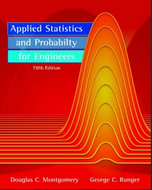An article in Fire Technology [An Experimental Examination of Dead Air Space for Smoke
Chapter 9, Problem 9-122(choose chapter or problem)
An article in Fire Technology [An Experimental Examination of Dead Air Space for Smoke Alarms (Vol. 45, 2009, pp. 97115)] studied the performance of smoke detectors installed not less than 100 mm from any adjoining wall if mounted on a flat ceiling, and not closer than 100 mm and not farther than 300 mm from the adjoining ceiling surface if mounted on walls. The purpose of this rule is to avoid installation of smoke alarms in the dead air space, where it is assumed to be difficult for smoke to reach. A number of interesting experiments were described in the paper. Results on the time to signal (in seconds) for one such experiment with pine stick fuel in an open bedroom using photoelectric smoke alarms are as follows: 220, 225, 297, 315, 282, and 313. (a) Is there sufficient evidence to support a claim that the mean time to signal is less than 300 seconds? (b) Is there practical concern about the assumption of a normal distribution as a model for the time-to-signal data? (c) Find a 95% two-sided CI on the mean time to signal.
Unfortunately, we don't have that question answered yet. But you can get it answered in just 5 hours by Logging in or Becoming a subscriber.
Becoming a subscriber
Or look for another answer
